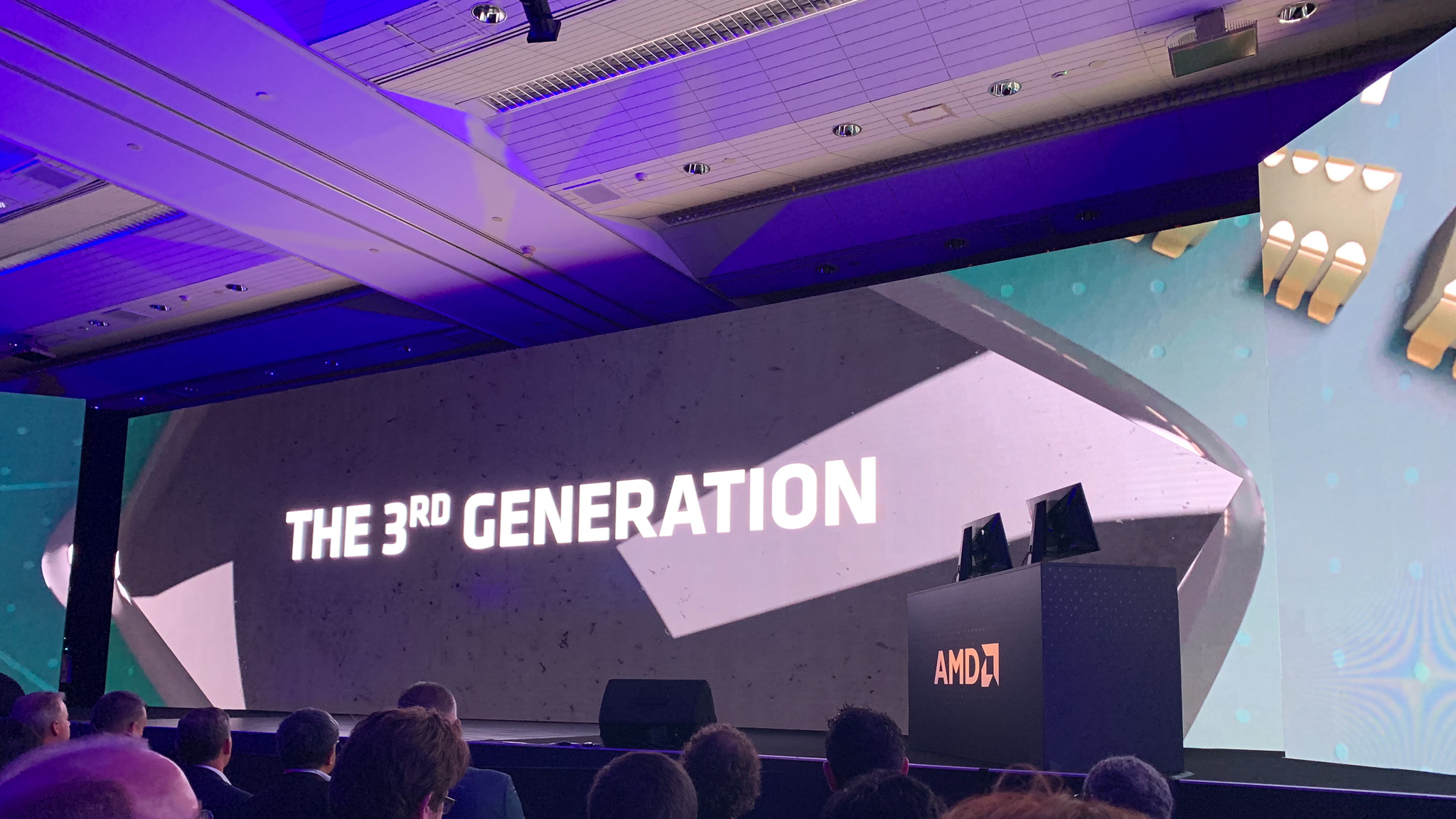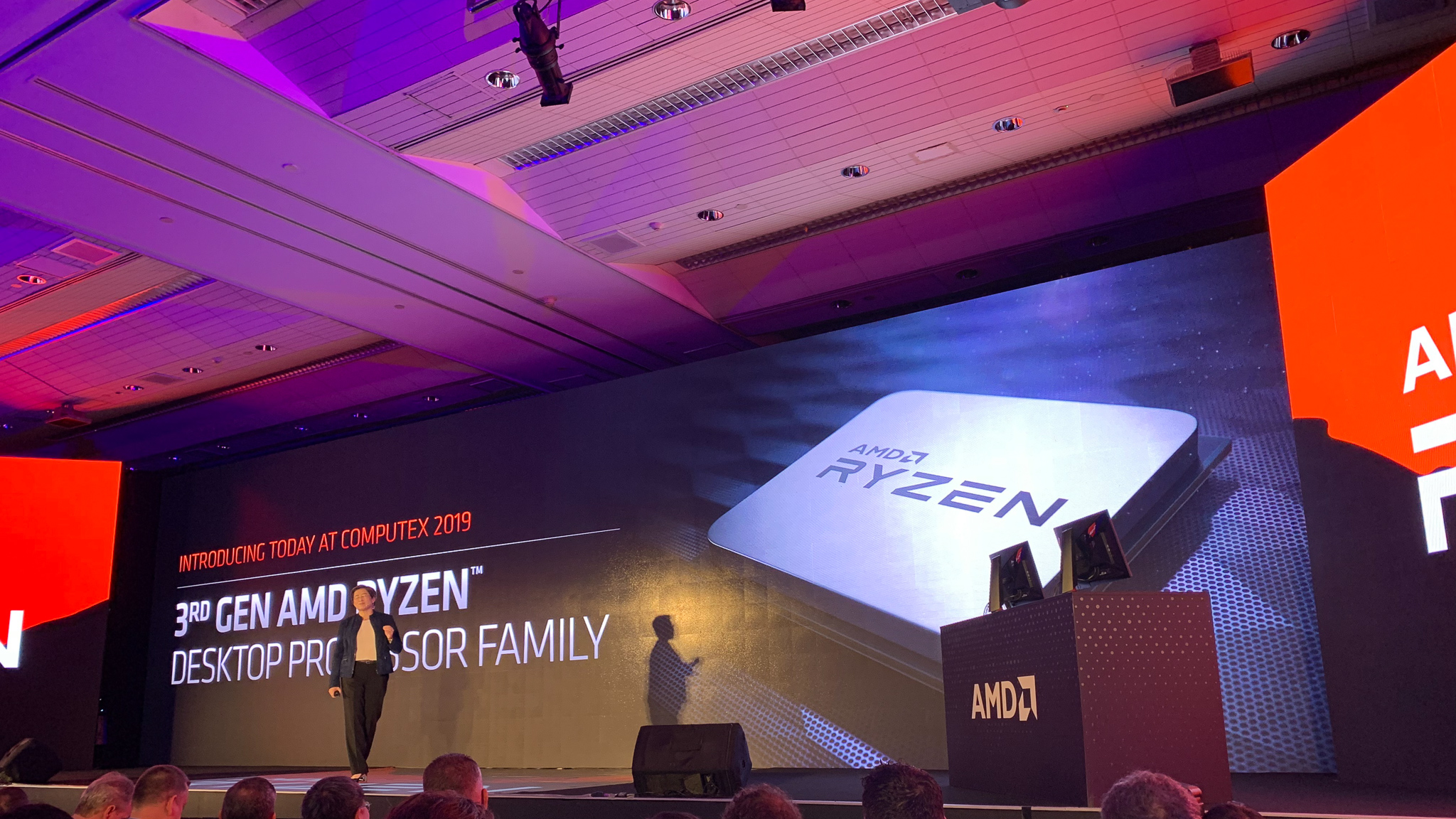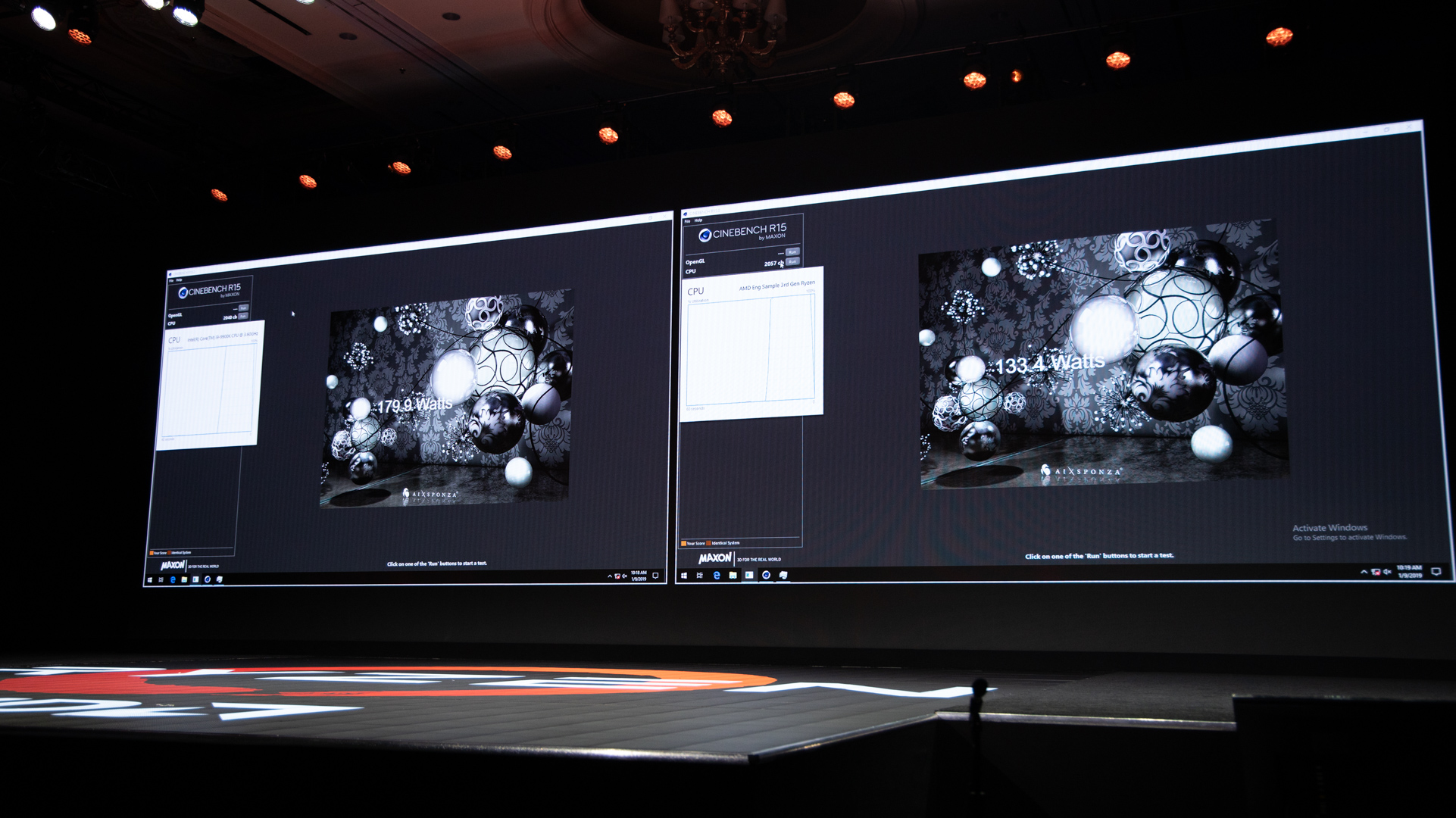Thanks to all the AMD Ryzen 3000 CPUs on the market these days, you could say that Team Red is on its way to processor dominance. AMD improved the market with their first-generation Ryzen chips and, with the Ryzen 2nd-generation back in 2018, they managed to double Intel’s sales. It’s no surprise that Ryzen’s 3rd generation came with a lot of hype. Thankfully, Team Red managed to beat all expectations.
That’s because the AMD Ryzen 3000 CPUs introduced the 7-nanometer(nm) Zen 2 architecture into the mainstream. And, they managed to do so with an accessible price tag for the average buyer. Now, you can get a CPU with 16-cores and 32-threads without getting a high-end workstation thanks to the Ryzen 9 3950X, which broke world overclocking records when it was released. AMD has also released processors to win the hearts of budget gamers with chips like the Ryzen 3100.
Considering Intel’s problems with releasing the 10nm Cannon Lake chips and it’s still having issues even in 2021, it’s no wonder that the AMD Ryzen 3000 processors have been such a big hit. And, thanks to the introduction of the new AMD Ryzen 5000 chips as well as the Ryzen 5000 CPUs for laptops, Team Red is establishing itself as the go-to chipmaker for content creators, gamers, and even casual users for the foreseeable future.
Take a look at this page to learn everything you need to know about AMD Ryzen 3000. These older CPUs are still worth considering in 2021, especially because the Ryzen 5000 stock is as limited as ever. With a long list of modern motherboards already supporting Ryzen 5000, it should be easy for you to upgrade later when they’re more readily available.
AMD Ryzen 9 3900X | 5 stars | Incredible performance, PCIe 4.0, Beats Intel at the same price | Single core performance still behind, Included heatsink may not be enough
AMD Ryzen 7 3700X | 4.5 stars | Incredible price to performance; Affordable; Included cooler | Single-threaded performance still falls behind Intel
AMD Ryzen 5 3600X | 5 stars | Excellent performance; Affordable; Includes a cooler | Still 6-cores
AMD Ryzen 5 3600 | 5 stars | Top-tier gaming performance; Easy upgrade path; High value | Only six cores
AMD Ryzen 3 3300X | 4.5 stars| Excellent multi-core performance, Affordable, Mid-range gaming performance for cheap | Not a huge jump over Ryzen 3 3100
AMD Ryzen 3 3100 | 4.5 stars | Excellent performance, Affordable, Doesn't suck up much power | Not as fast as the 3300X, May bottleneck high-end GPUs
Cut to the chase
- What is it? AMD’s 3rd generation of mainstream processors for laptops and desktops
- When is it out? Out since July 7, 2019
- What will it cost? Starting at $99 (about £79, AU$150)

AMD Ryzen 3rd Generation release date
The AMD Ryzen 3rd Generation processors, first announced at CES 2019, are out now. Many of them finally hit the streets on July 7. The Ryzen 9 3900 and Ryzen 5 3500X, on the other hand, both came out on October 8. The AMD Ryzen 9 3950X, the surprise reveal of E3 2019, came out later on November 25.

AMD Ryzen 3rd Generation price
At AMD’s Computex 2019 keynote, Team Red showcased several processors from the Ryzen 5 3600 to the Ryzen 9 3900X. These CPUs offer seriously impressive options from the mid-range to the high-end. Curiously, there have been no announcements of any 7nm Zen 2 processors for the budget sector, but at least AMD launched new APUs in the Ryzen 3 3300G and Ryzen 5 3400G at $99 (£94, AU$144) and $149 (£139, AU$240), respectively.
- AMD Ryzen 9 3950X: $749 (about £590, AU$1,080)
- AMD Ryzen 9 3900X: $499 (about £390, AU$720)
- AMD Ryzen 7 3800X: $399 (about £310, AU$580)
- AMD Ryzen 7 3700X: $329 (about £260, AU$480)
- AMD Ryzen 5 3600X: $249 (about £200, AU$360)
- AMD Ryzen 5 3600: $199 (about £160, AU$290)
- AMD Ryzen 5 3400G: $149 (£139, AU$240)
- AMD Ryzen 3 3300X: $120 (about £100, AU$190)
- AMD Ryzen 3 3300G: $99 (£94, AU$144)
- AMD Ryzen 3 3100: $99 (about £79, AU$150)

AMD Ryzen 3rd Generation specs
Now that the AMD Ryzen 3rd Generation lineup has been released, we know exactly what’s inside these new 7nm processors for consumers. You should experience perceptible performance bumps, with power consumption taking a nosedive. Improvements all around.
The 7nm Zen 2 architecture found in AMD Ryzen 3rd Generation processors allows AMD to bring TDP down to just 65W in the Ryzen 5 3600, for one. It also implements a considerable 15% improvement to IPC (instructions per clock) performance. This should see performance go up, resulting in some of the best processors for gaming.
With the Ryzen 5 3600X, AMD takes the performance of the budget-minded Ryzen 5 2600X to another level, increasing IPC (instructions per clock) performance and clock speed while keeping the same price point.
Of course, if we can’t talk about AMD’s affordable releases without mentioning the AMD Ryzen 3 3300X, which delivers mid-range gaming performance for much cheaper, and its lower-specced sibling, the AMD Ryzen 3 3100. The Ryzen 3 3300X boasts double the amount of L3 cache over its predecessor and manages to be about 10-20% faster with its 4 cores, 8 threads and 4.3GHz in boost clock. The Ryzen 3 3100, on the other hand, has the same amount of L3 cache, as well as the same number of cores and threads. However, it has a boost clock of only 3.6GHz.
On the high-end, there’s the Ryzen 9 3950X, an absolute monster of a processor, with 16 cores and 32 threads and a boost clock of 4.7GHz. These specs are stunning in their own right, but what really takes it to the next level is that it manages to do it with a relatively low 105W TDP.
Next to it is the AMD Ryzen 9 3900X, and while it’s not as impressive as the 3950X – at least on paper – it still packs 12-cores and 24-threads of high-performance power. With boost clocks up to 4.6GHz, it’s an impressive amount of power for that 105W TDP, even if temperatures get a little high. And, for about the same price point, the Ryzen 9 3900X is between 25%-40% faster than the Intel Core i9-9900K in multi-threaded loads.
And there’s the AMD Ryzen 7 3700X, which boasts 8-core, 16-thread and a TDP of just 65W. Just like the Ryzen 9 3900X, it’s also an absolute beast when it comes to multi-threaded workloads.
As far as the rumored new wave of Ryzen 3000 processors, well, the AMD Ryzen 9 3900 would be a lower-powered version of the excellent AMD Ryzen 9 3900X, with a similar relationship between the Ryzen 7 3700 and the Ryzen 7 3700X. They apparently will have the same core and thread counts as their X counterparts, only with a 65W TDP.
However, AMD Ryzen 3rd Generation is more than just the mid-range and the top-end. If a new leak is to be trusted, we may be seeing an AMD Ryzen 3 3100 and an AMD Ryzen 3 3300X, both of which would be 4-core, 8-thread entry-level 65W processors.
We went ahead and listed out all the specs of the confirmed Ryzen 3000 processors below:
- AMD Ryzen 9 3950X – 16-cores, 32-threads | 4.7GHz boost, 3.5GHz base | 105W
- AMD Ryzen 9 3900X – 12-cores, 24-threads | 4.6GHz boost, 3.8GHz base | 105W
- AMD Ryzen 7 3800X – 8-cores, 16-threads | 4.5GHz boost, 3.9GHz base | 105W
- AMD Ryzen 7 3700X – 8-cores, 16-threads | 4.4GHz boost, 3.6GHz base | 65W
- AMD Ryzen 5 3600X – 6-cores, 12-threads | 4.4GHz boost, 3.8GHz base | 95W
- AMD Ryzen 5 3600 – 6-cores, 12-threads | 4.2GHz boost, 3.6GHz base | 65W
- AMD Ryzen 3 3300X – 4-cores, 8-threads | 4.3GHz boost, 3.5GHz base | 65W
- AMD Ryzen 5 3400G – 4-cores, 8-threads | 4.2GHz boost, 3.7GHz base | 65W
- AMD Ryzen 3 3100 – 4-cores, 8-threads | 3.6GHz boost, 3.5GHz base | 65W
At every level, AMD Ryzen 3rd Generation brings better performance and concurrently lowers power consumption over the previous generation. Of course, AMD boasted some benchmarks where it flexed on the competition, but that’s par for the course.
The X570 chipset also marks a generational improvement in computing. Along with the faster processors, the biggest improvement is the support for PCIe 4.0, exclusive to AMD. This new generation of PCIe brings faster graphics cards and SSDs to AMD’s platform. It delivers up to 51% faster SSD performance, along with 69% faster graphics performance – though that will be exclusive to AMD Navi graphics cards for now.
X570 also brings native support to four SuperSpeed USB ports, with a maximum bandwidth of 10Gbps. This will support both USB-A and USB-C connections, and while it’s not as fast as Thunderbolt 3, the native support should lead to wider adoption across desktop motherboards.
Ryzen isn’t just about desktop components. At E3 2019, Microsoft revealed that its follow up to the Xbox, Project Scarlett, will be powered by a custom SoC made of a Zen 2 processor and an AMD Navi GPU. Slated for a "Holiday 2020" release, Project Scarlett is rumored to be four times more powerful than the Xbox One X having the ability to run games at 120FPS and potentially 8K resolutions.
- AMD Ryzen Threadripper 3rd Generation HEDT processors could be even more impressive
from TechRadar: computing components news https://ift.tt/3d1O10p
via IFTTT
No comments:
Post a Comment